Maxfield Parrish
Make-believe Landscapes
1910–1961
Maxfield Parrish (July 25, 1870 – March 30, 1966) was an American painter and illustrator active in the first half of the 20th century. He is known for his distinctive saturated hues and idealized neo-classical imagery. His career spanned fifty years and was wildly successful: his painting Daybreak (1922) is the most popular art print of the 20th century. Parrish’s art is characterized by vibrant colors; the color Parrish blue was named after him. He achieved such luminous color through glazing. This process involves applying alternating bright layers of translucent glaze separated by varnish over a base rendering. Parrish usually used a blue and white monochromatic underpainting.
Parrish used many other innovative techniques in his paintings. He would take pictures of models in black and white geometric prints and project the image onto his works. This technique allowed for his figures to be clothed in geometric patterns, while accurately representing distortion and draping. Parrish would also create his paintings by taking pictures, enlarging, or projecting objects. He would cut these images out and put them onto his canvas. He would later cover them with clear glaze. Parrish’s technique gave his paintings a more three-dimensional feel.
The outer proportions and internal divisions of Parrish’s compositions were carefully calculated in accordance with geometric principles such as root rectangles and the golden ratio. In this Parrish was influenced by Jay Hambidge‘s theory of Dynamic Symmetry.
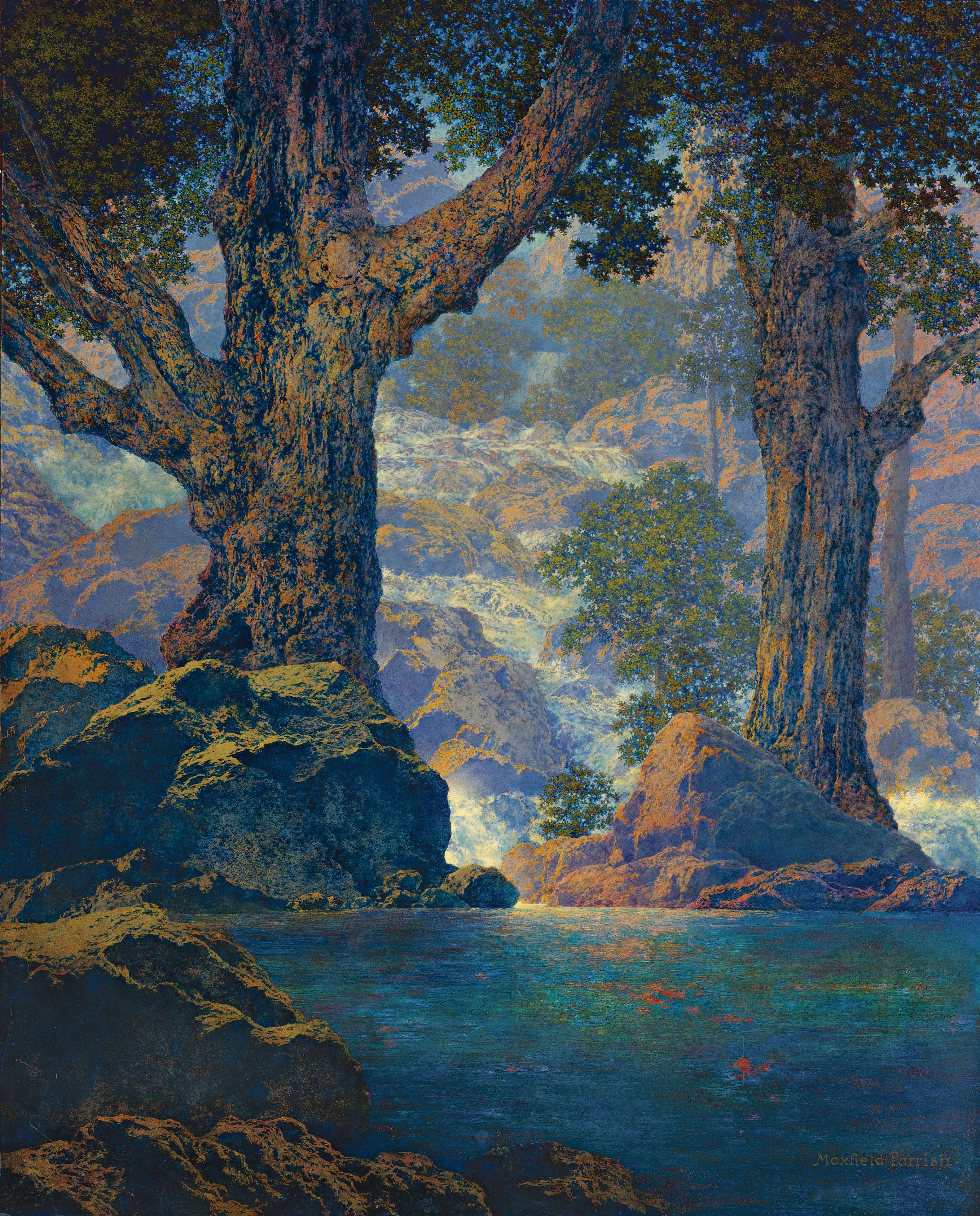
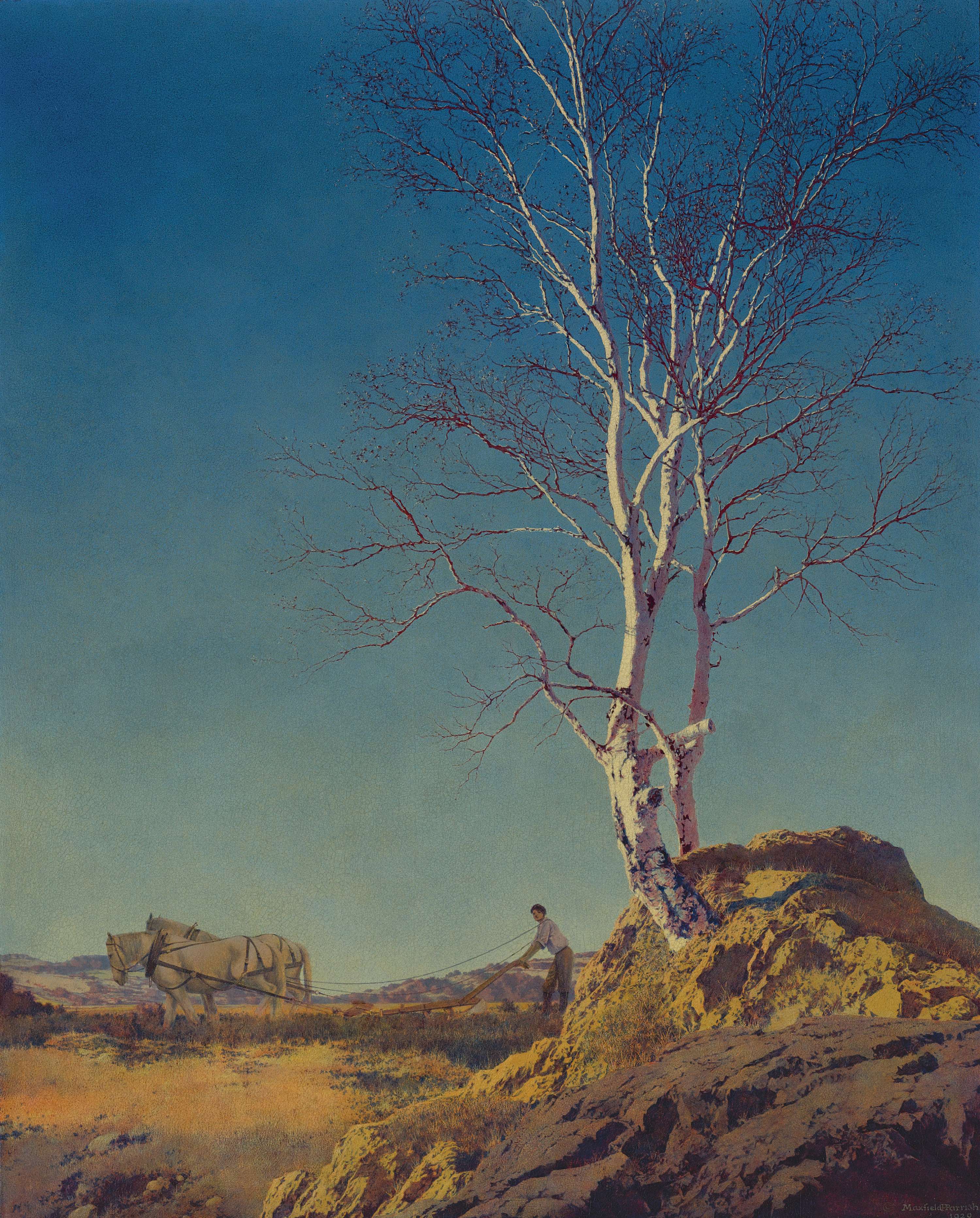
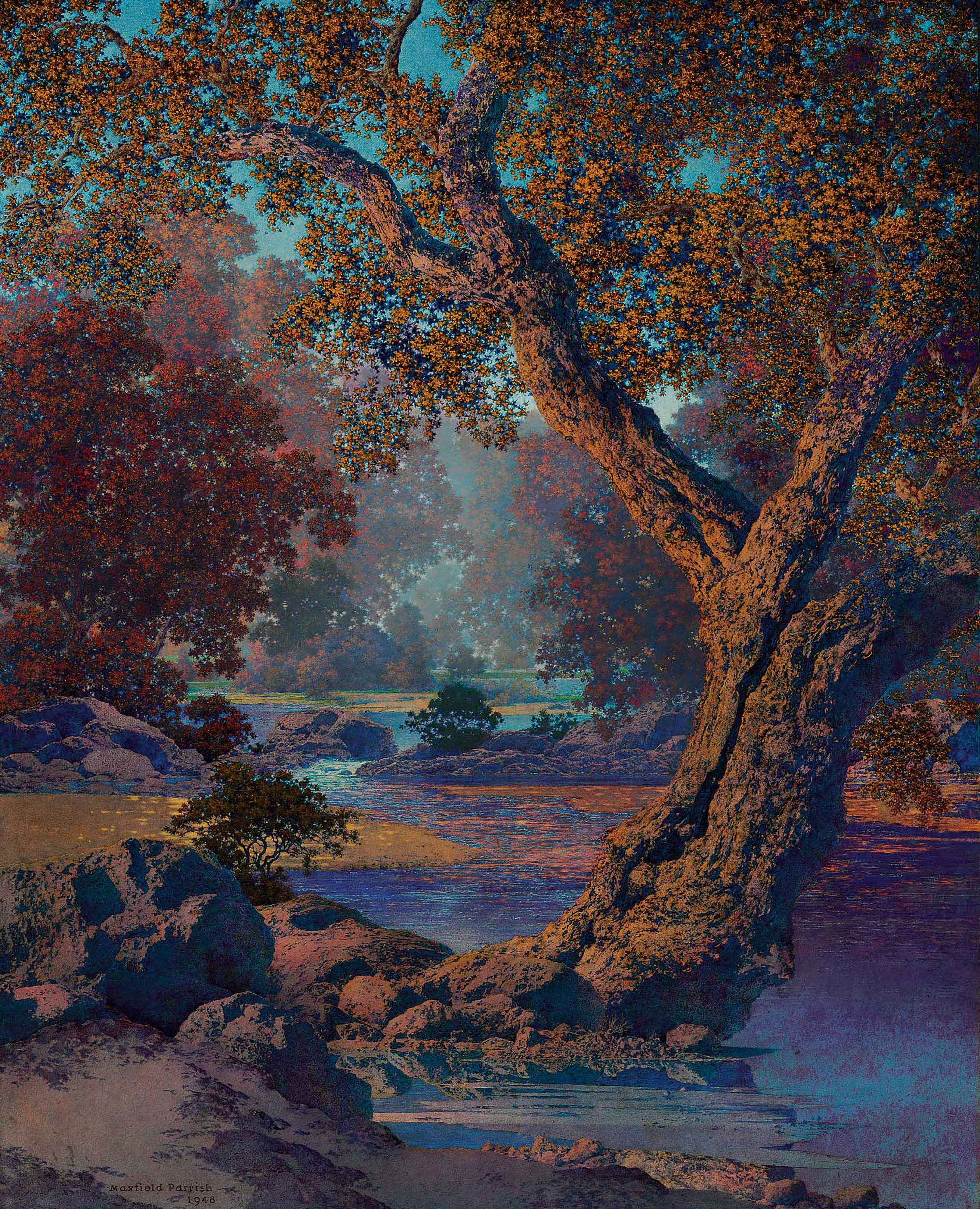
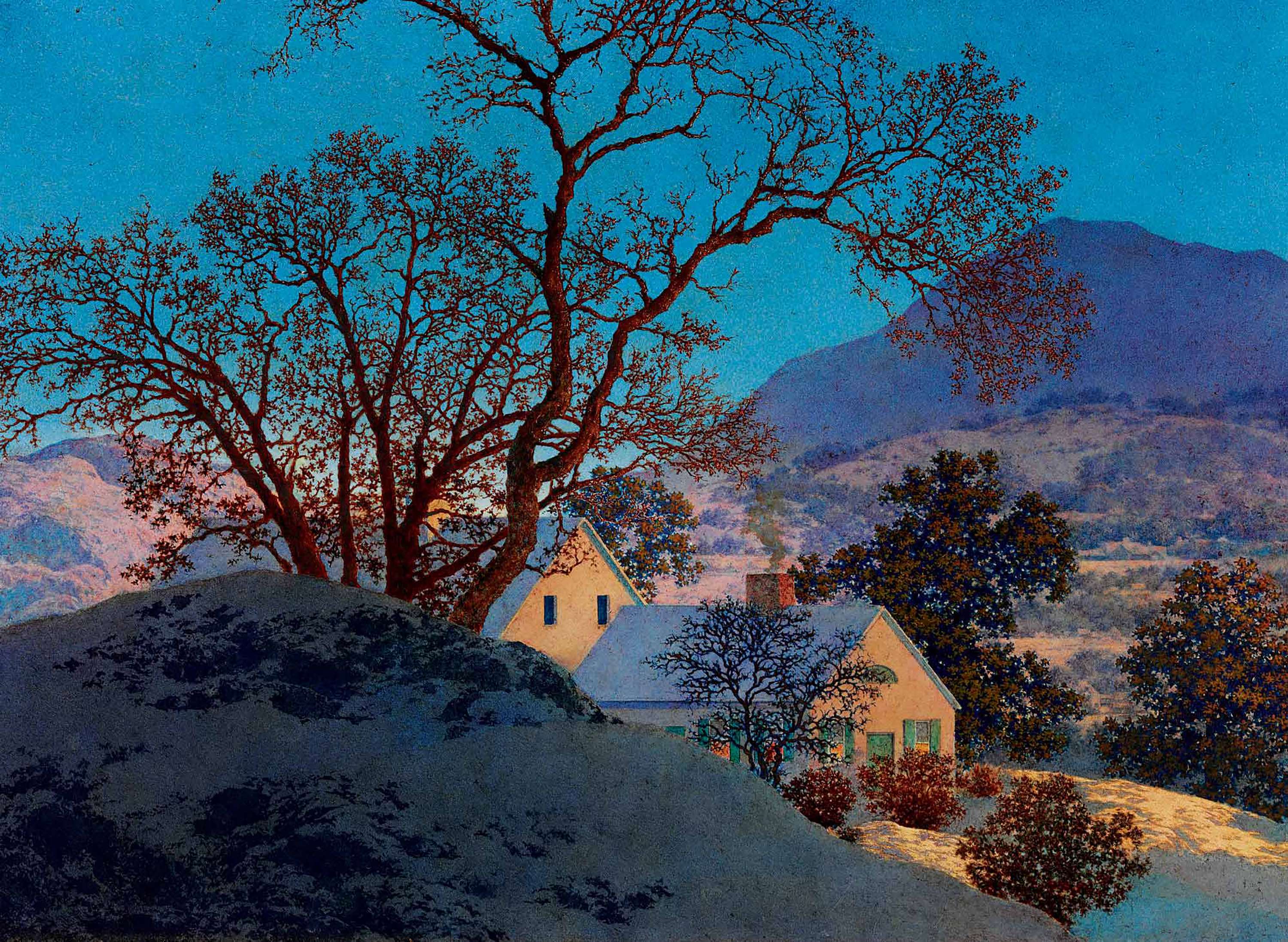
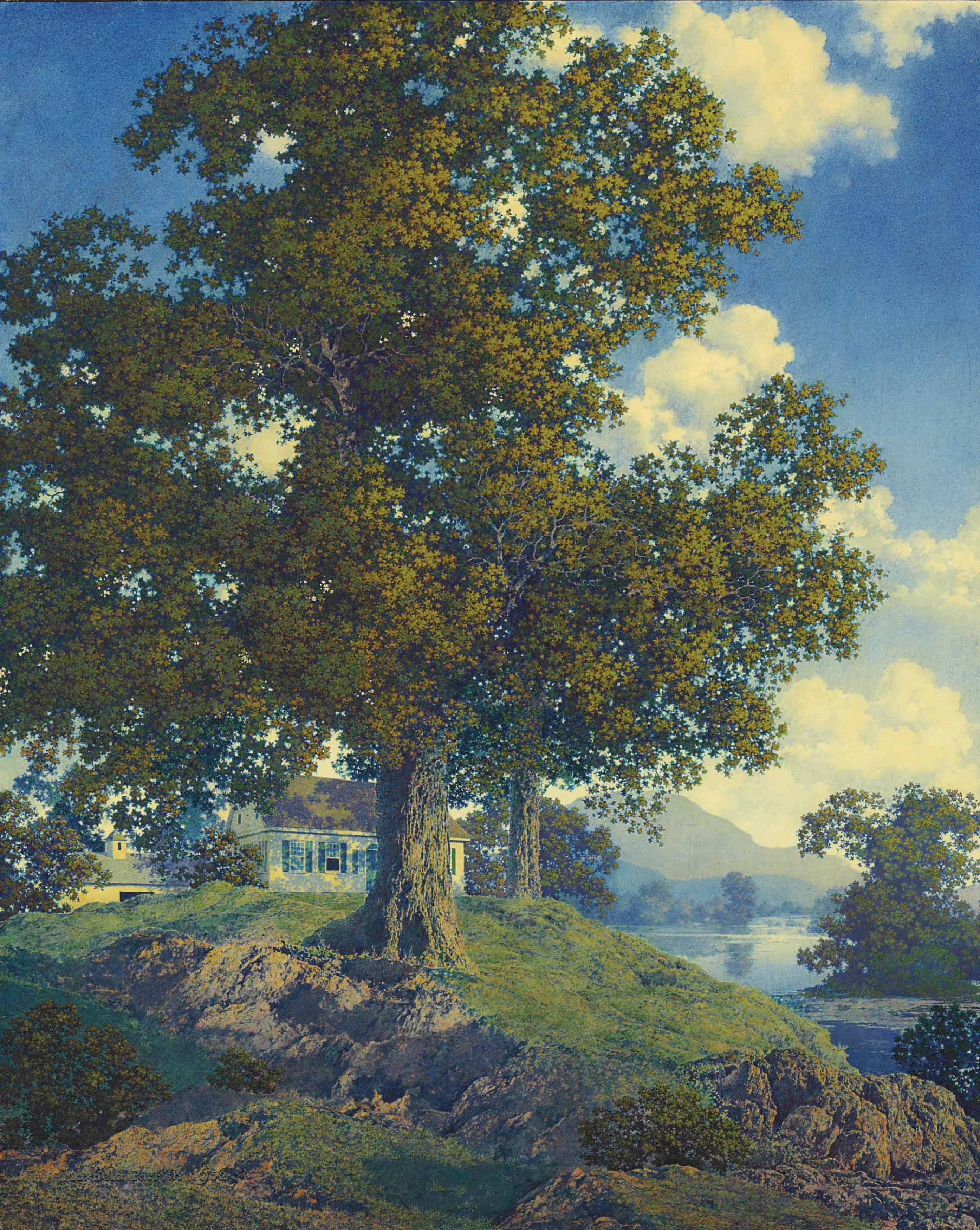
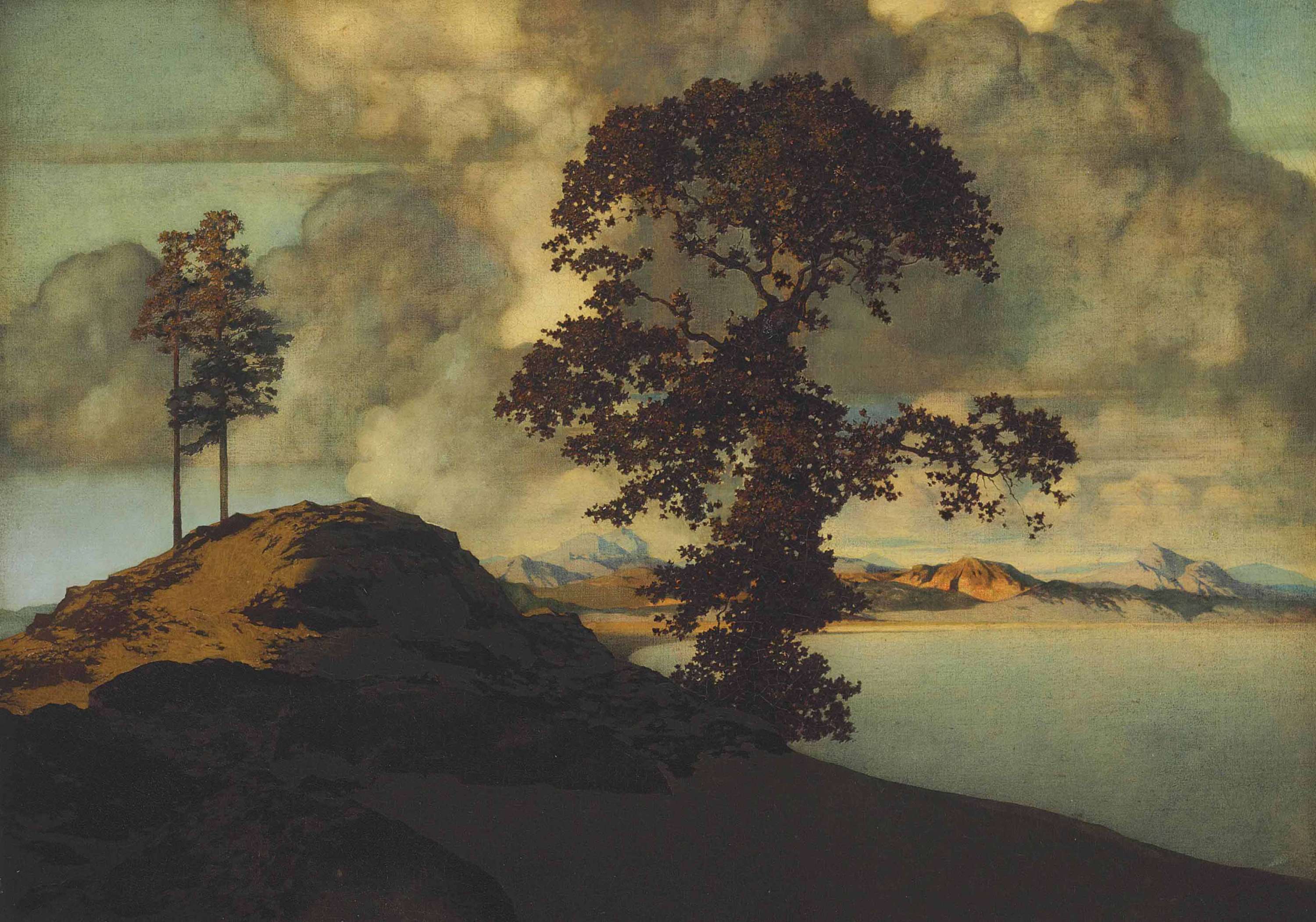
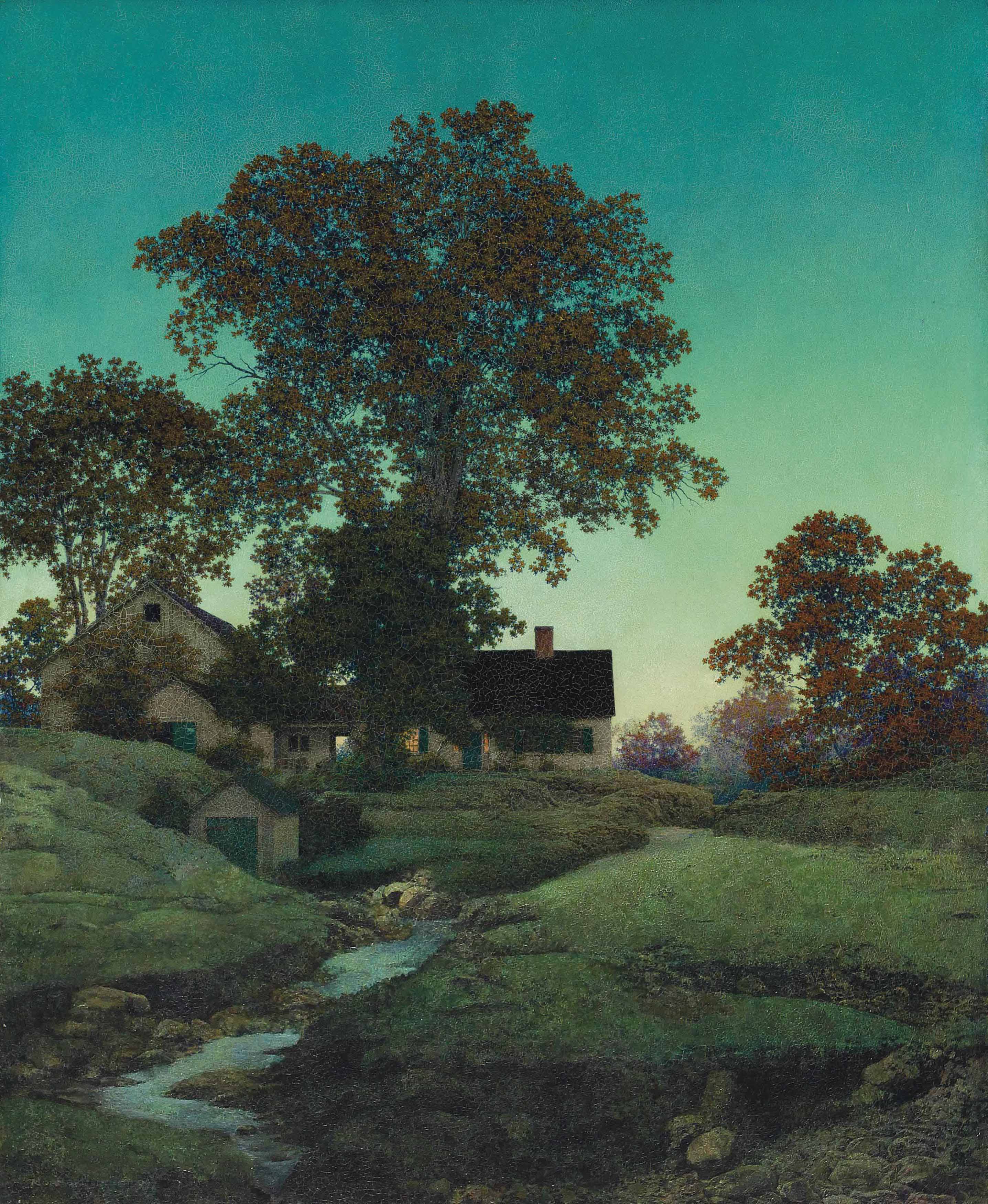
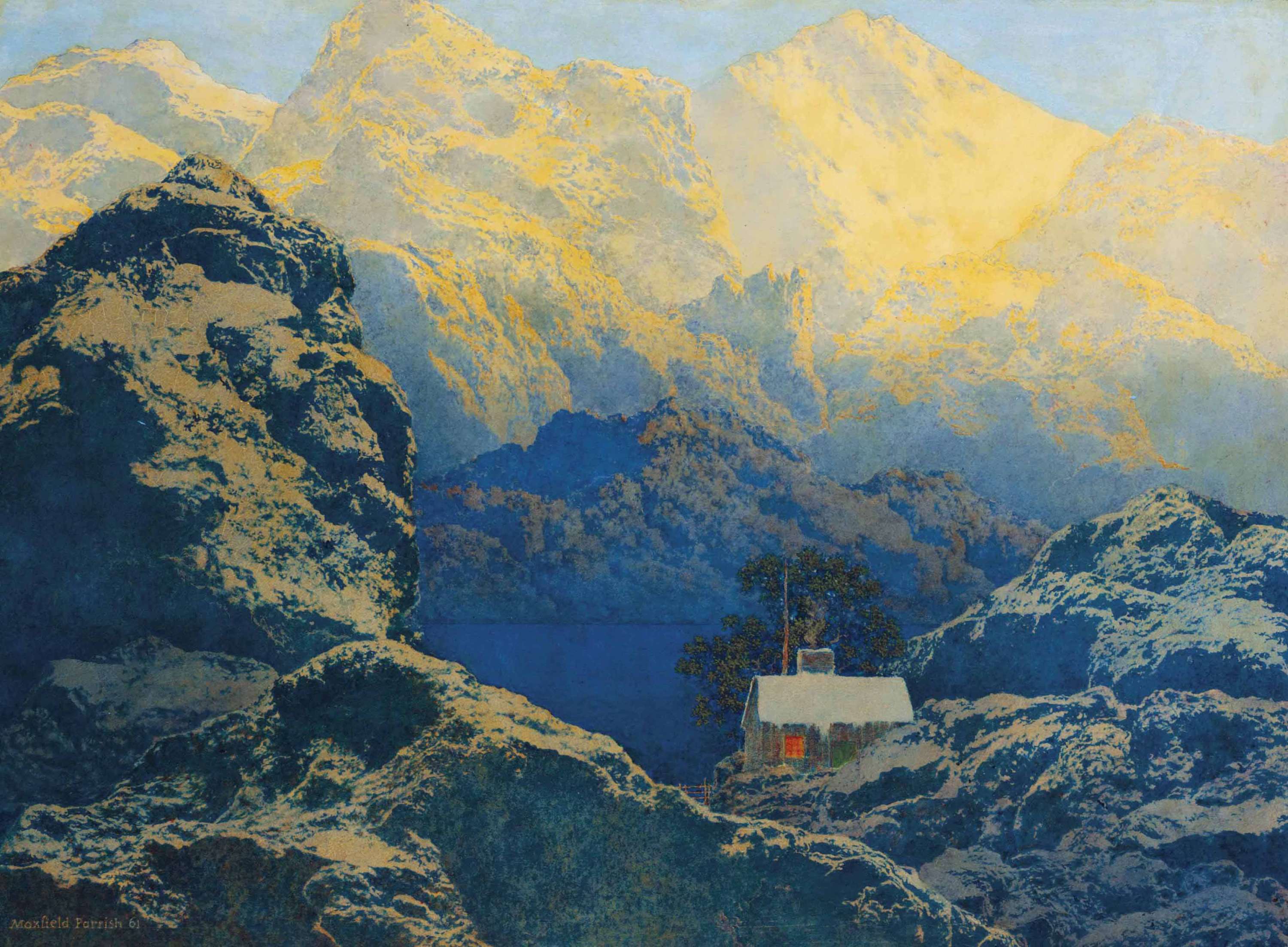
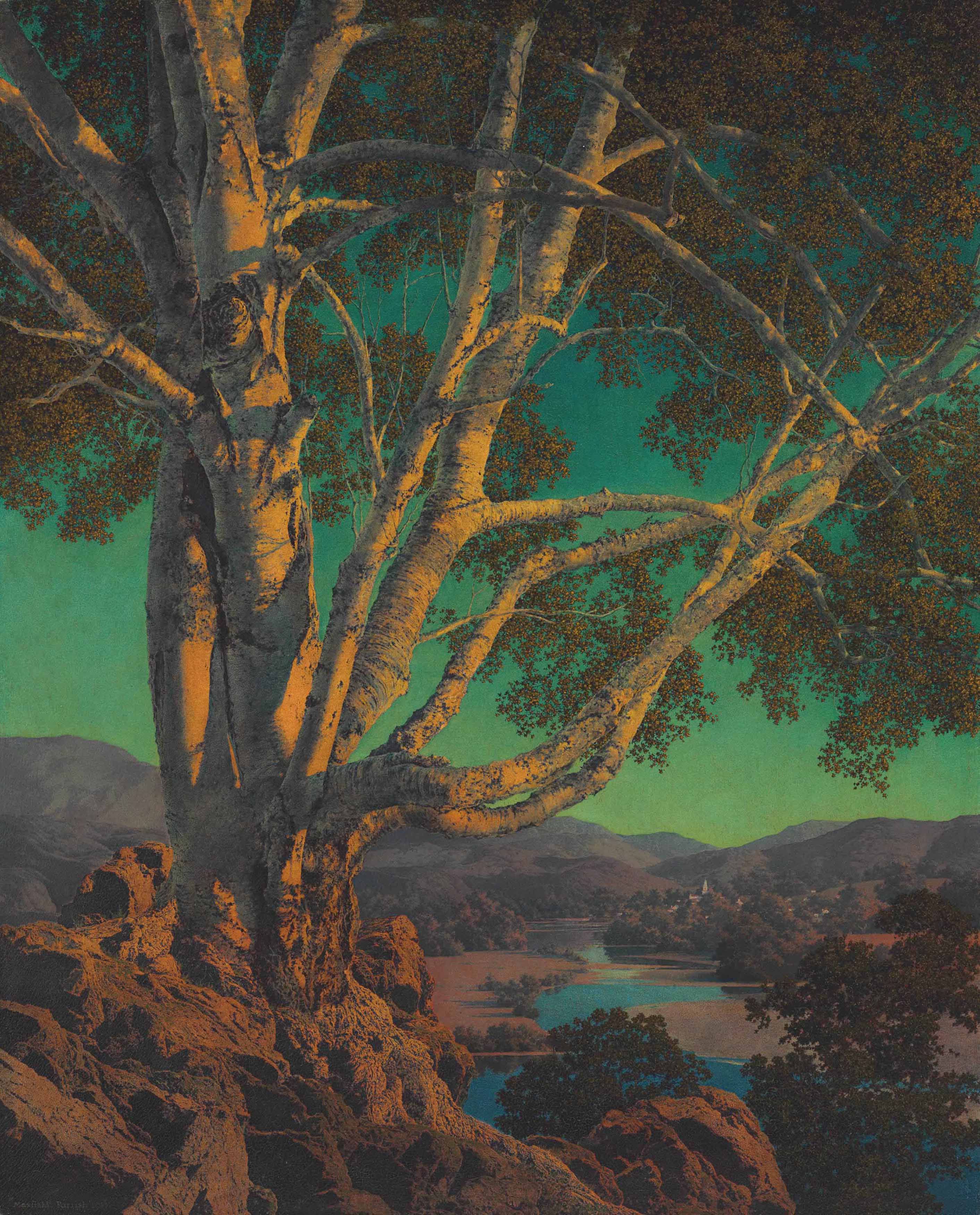
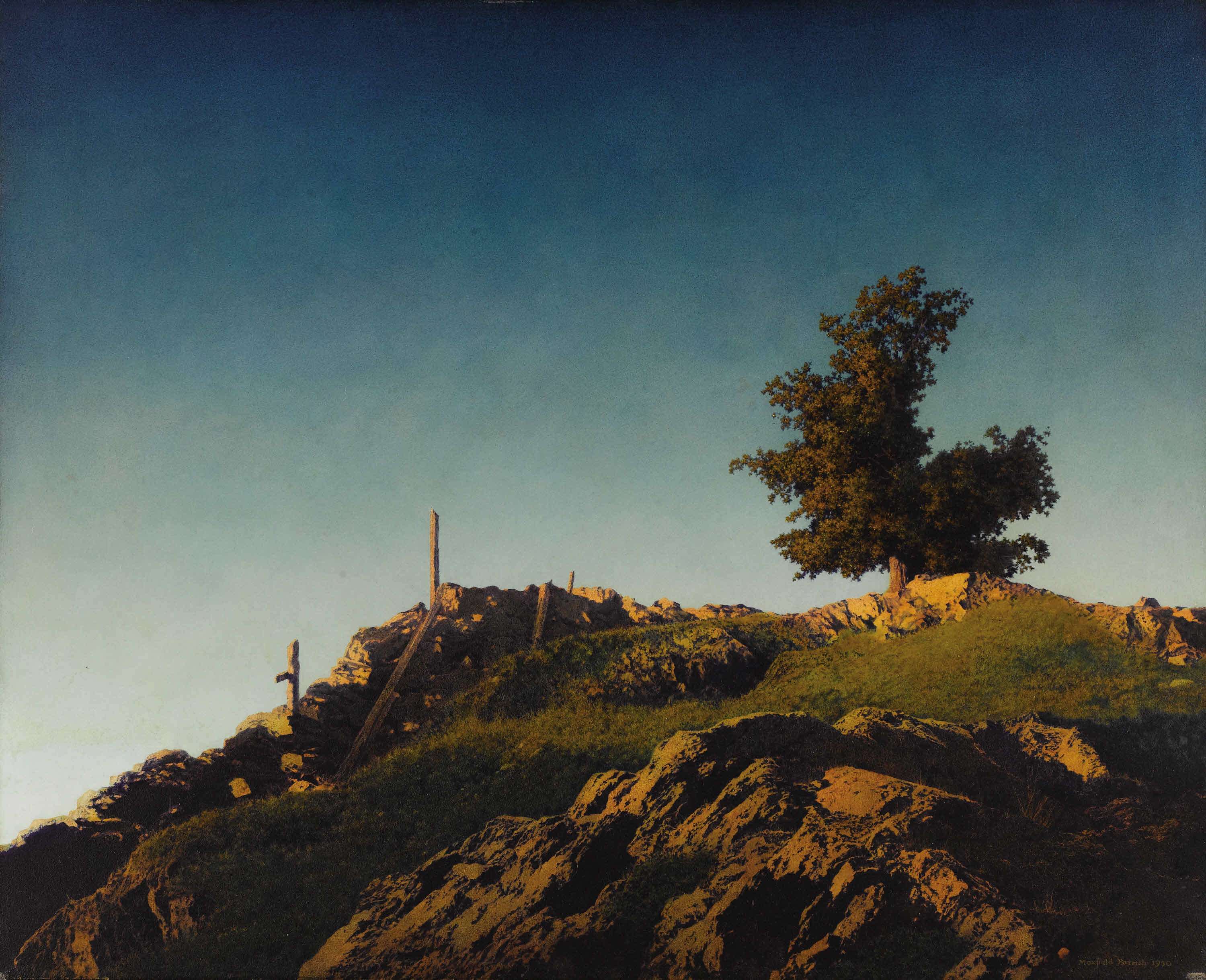
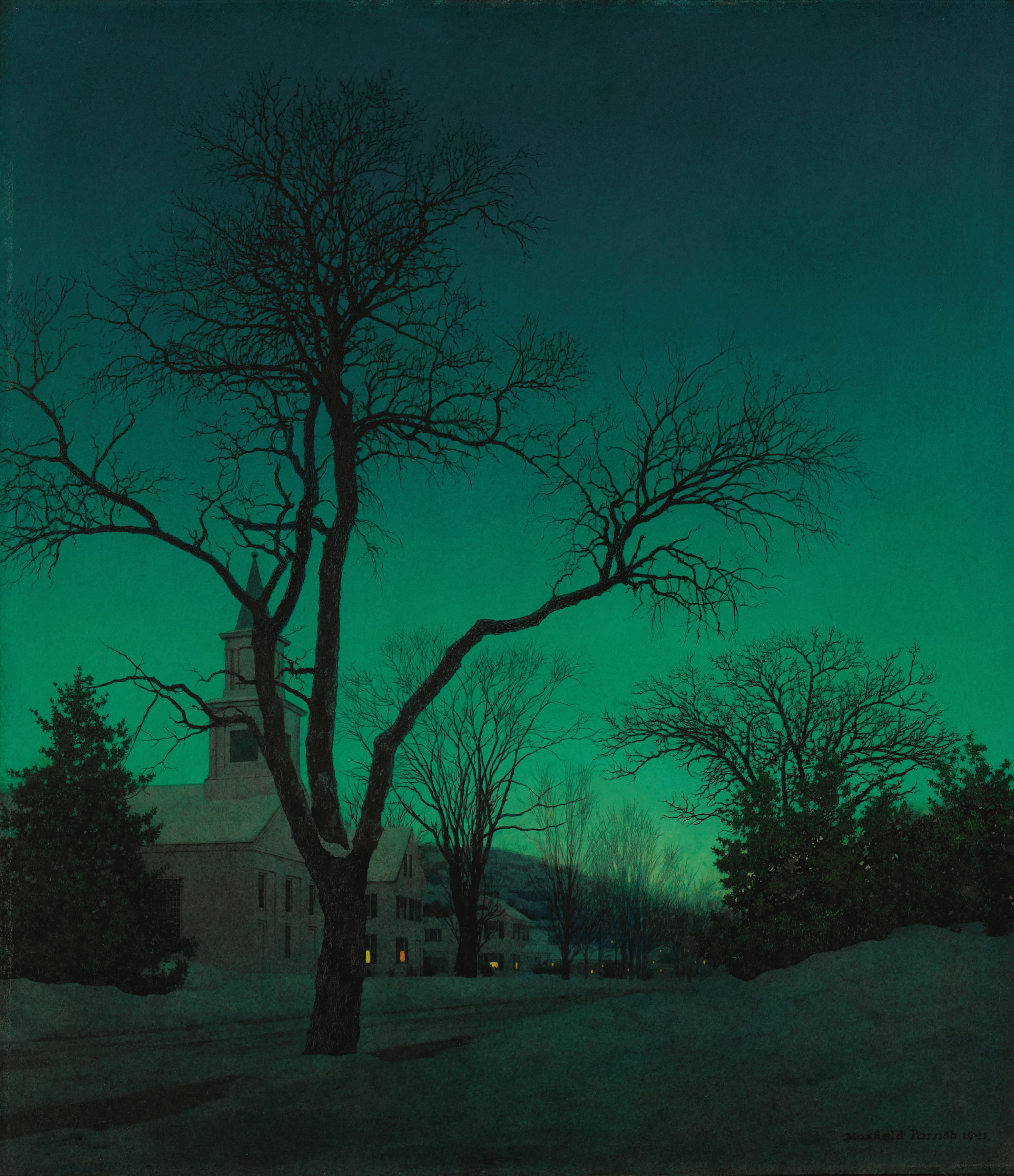
Lieu: USA
Mouvement: Néo-classicisme
Text: Wikipedia
Publié: Septembre 2019
Catégorie: Peinture
Source